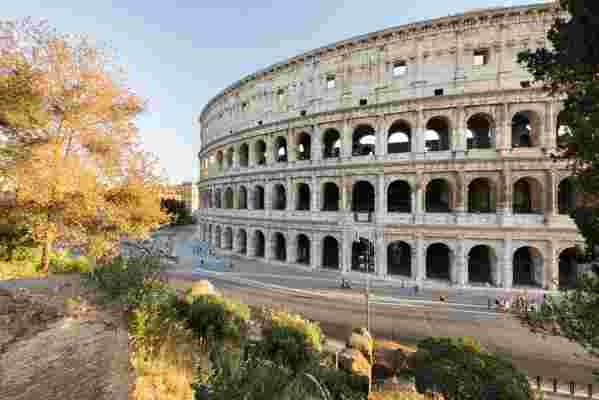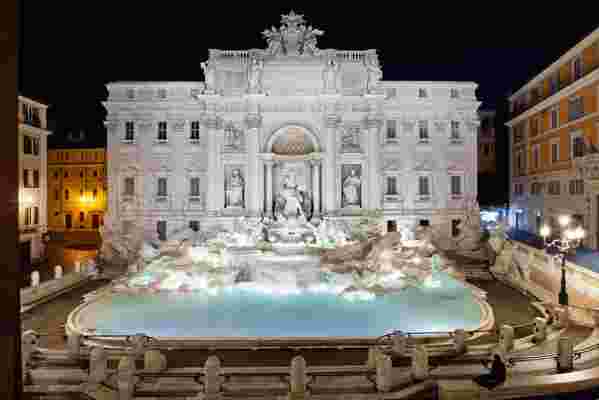Like most Italians and millions of tourists every year, Diego Della Valle was used to Rome’s Colosseum looking magnificently woebegone—its travertine blocks grayed with soot, pitted by acid rain, and loosened after centuries of freezing and thawing as well as by traffic and subway vibrations. But in 2011, at a time the Italian government admitted it was too cash-strapped to restore the world’s largest amphitheater , Della Valle, the dashing silver-maned chairman and CEO of Tod’s, chipped in some $30 million.
“One of the reasons for doing the restoration was to emphasize the pride of being Italian and doing things for the country,” says Della Valle, who was the man of the hour on July 1, when the completion of phase one of the Colosseum’s reconditioning—a three-year-long cleaning and stabilization of the massive first-century structure—was officially celebrated. (The landmark stayed open to the public throughout the work.) The grimy stone walls are golden again, and traffic has been largely restricted on the adjacent Via dei Fori Imperiali, granting travelers and locals alike more space for a leisurely appreciation of the Colosseum and the historic center’s other ancient ruins. Up next at the amphitheater is the restoration of underground chambers, followed by the construction of a visitors’ center and a cafeteria. “When I see the Colosseum now, I feel proud for me and for the people who work in my group and for all the people who are loyal to my products,” Della Valle modestly continues. “Everyone has partly contributed to this project.”

The Colosseum after the latest phase of Tod’s multimillion-dollar refreshing.
Call it patrimonial bliss. All across Rome—and for that matter, Italy—top fashion houses have revived endangered treasures, taking them into their ardent embrace. The Trevi Fountain reopened last November after a $2.4 million revamp by Fendi, which also revived the city’s Palazzo della Civiltà Italiana, a long-abandoned 1940s Mussolini-modern tower that is now the firm’s headquarters. For more than a year, Bulgari has been financing the overhaul of the mosaics at the Baths of Caracalla. And on September 22 the jewelry firm unveiled its rejuvenation of the Spanish Steps following a ten-month rehabilitation, repairing broken stone and cleaning off dirt and graffiti, that cost $1.7 million and involved nearly 100 expert craftspeople. To celebrate, Bulgari hosted a lavish soiree at the site, complete with a cavalcade of fireworks.
Thanks to a postrecession economy now showing signs of vitality, the Italian government’s coffers are filling up again, and historic sites are feeling the love. Still, “the issue of cultural preservation remains very urgent in Italy,” Della Valle cautions. “Besides it being an important economic resource for us, we have the duty to protect this heritage for everyone.” And not just in his homeland, he points out: “We need to preserve our cultural heritage all over the world.” Fellow fashion magnates , consider that statement a well-tailored gauntlet thrown down.

Fendi underwrote the restoration of the legendary Trevi Fountain.
